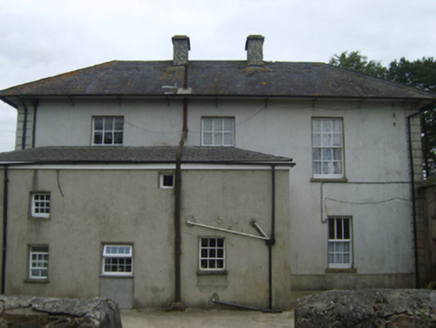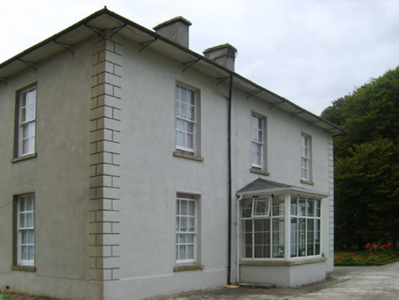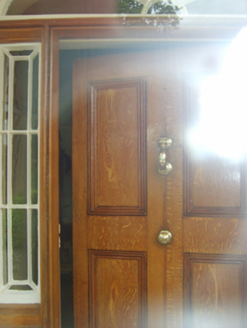Survey Data
Reg No
15703507
Rating
Regional
Categories of Special Interest
Architectural, Artistic
Previous Name
Ballynabola House
Original Use
Farm house
In Use As
Farm house
Date
1842 - 1890
Coordinates
279670, 124488
Date Recorded
11/09/2007
Date Updated
--/--/--
Description
Detached three-bay two-storey farmhouse, extant 1890, on a rectangular plan centred on single-bay single-storey projecting glazed porch to ground floor; two-bay two-storey side elevations with three-bay two-storey rear (north) elevation. Renovated, ----. Hipped slate roof on a quadrangular plan with roll moulded clay ridge tiles, paired rendered central chimney stacks having cut-granite stepped capping, and cast-iron rainwater goods on slightly overhanging rendered eaves retaining cast-iron octagonal or ogee hoppers and downpipes. Replacement cement rendered walls on rendered plinth with rusticated rendered piers to corners. Hipped segmental-headed central door opening into farmhouse with timber mullions on threshold supporting timber transom, and concealed dressings framing timber panelled door having sidelights below fanlight. Square-headed window openings with cut-granite sills, and concealed dressings framing six-over-six timber sash windows. Interior including (ground floor): central hall retaining carved timber surrounds to door openings framing timber panelled doors; and carved timber surrounds to door openings to remainder framing timber panelled doors with timber panelled shutters to window openings. Set in landscaped grounds.
Appraisal
A farmhouse erected by James Brown (d. 1884) representing an integral component of the mid nineteenth-century domestic built heritage of Ballynabola with the architectural value of the composition, one rooted firmly in the prevailing late Georgian fashion, suggested by such attributes as the compact rectilinear plan form centred on a Classically-detailed doorcase demonstrating good quality workmanship, albeit one largely concealed by a later porch; the very slight diminishing in scale of the openings on each floor producing a feint graduated visual impression; and the slightly oversailing roofline. Having been well maintained, the elementary form and massing survive intact together with substantial quantities of the original fabric, both to the exterior and to the interior: the recent substitution of the surface finish, however, has not had a beneficial impact on the character or integrity of the composition. Furthermore, adjacent outbuildings (extant 1902) continue to contribute positively to the group and setting values of a neat self-contained ensemble having historic connections with the Brown family including John Alexander Brown (1836-90), 'late of Ballinaboola New Ross County Wexford' (Calendars of Wills and Administrations 1891, 63).





